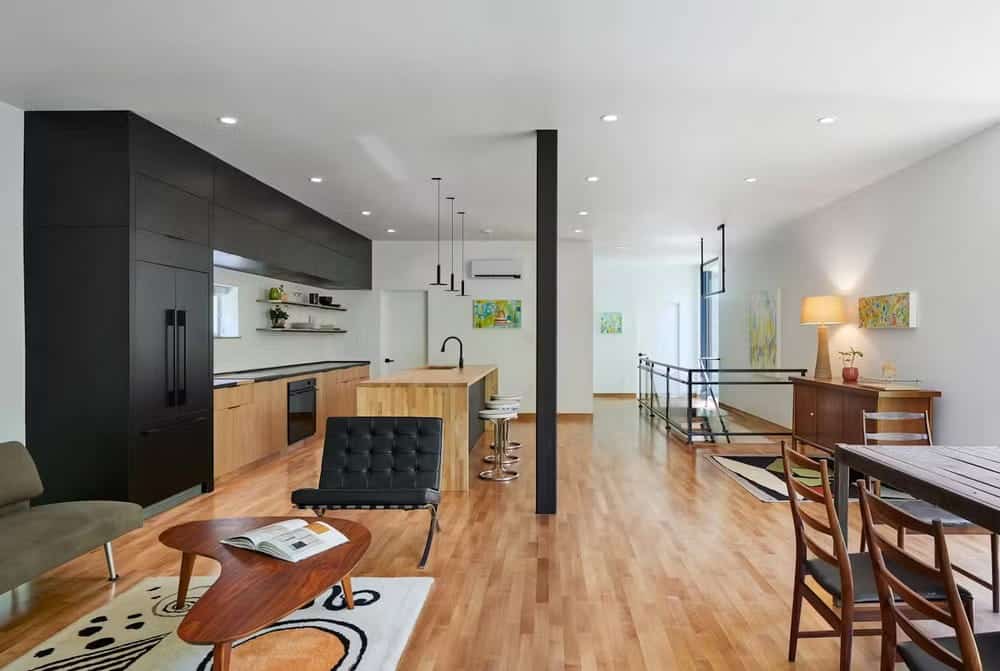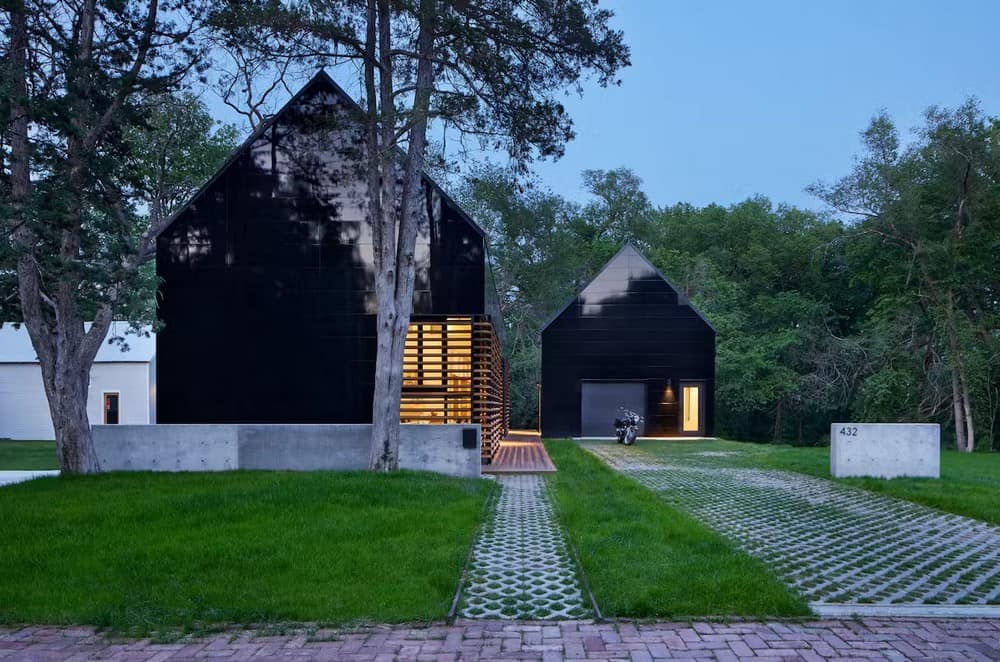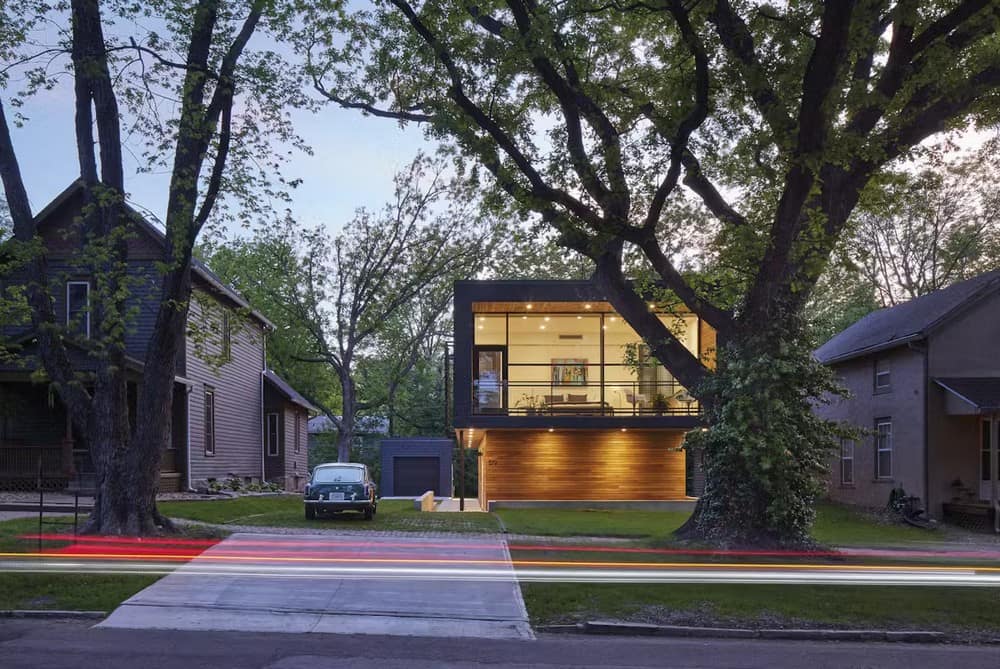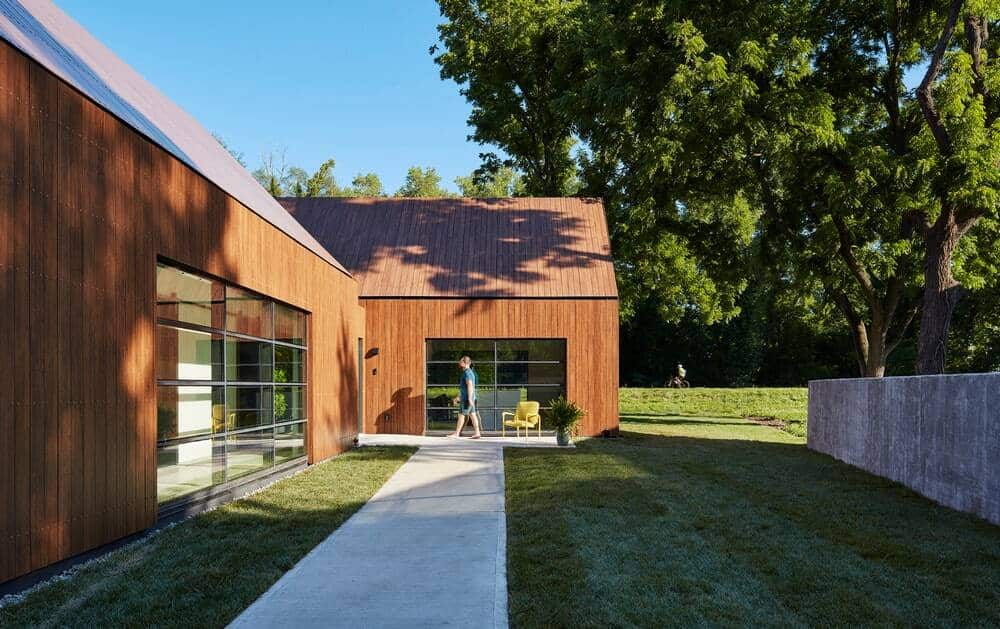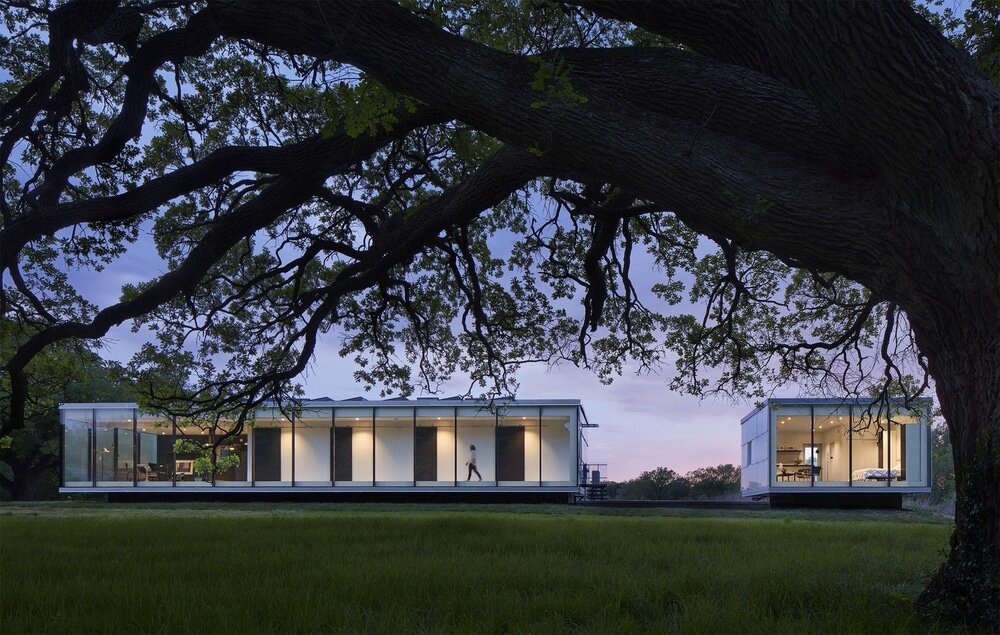Studio 804
Studio 804 is a design-build studio embedded within the University of Kansas School of Architecture & Design, offering a rigorous, year-long graduate program where students both design and construct a complete, high-performance building. Founded by Professor Dan Rockhill, the studio emphasizes sustainability, affordability, and hands-on experience—covering everything from schematic design and construction documents to site work, energy systems, and collaboration with consultants and code officials.
Most Studio 804 projects have achieved LEED Platinum certification, with several also meeting Passive House (PHIUS) standards and targeting net-zero energy use. Notable built works include the Prescott Passive House and the modular MOD 4 residence, showcasing the program’s commitment to pushing the boundaries of sustainable, student-led architecture.
LOCATION: Lawrence, Kansas, United States
LEARN MORE: Studio 804
Located at 436 Indiana Street in the historic Pinkney neighborhood of Lawrence, Kansas, Indiana Street Passive House offers a prime example of modern, high-performance construction. Designed and built entirely by Studio 804’s graduate students at the University…
The Pinkney Neighborhood House is expected to achieve LEED Platinum certification. The highest certification level possible under the U.S. Green Building Council’s (USGBC) standards for sustainable practice.
The Indiana Street House was designed for and inspired by the site that is in this neighborhood. The historic Pinckney Neighborhood is a comfortable older neighborhood well-connected to the heart of Lawrence, Kansas.
The 722 Ash Street residence consists of a 1500 sf primary house with a contiguous 500 sf accessory dwelling. The project is set in the rich culture of North Lawrence, its rear property line abuts the Lawrence…
Successful sustainable design requires analyzing and planning for local economic and demographic trends. In recent years, both Lawrence, Kansas and Studio 804 have recognized that while the county’s population is growing at a high rate the average…
This LEED Platinum Certified House is the latest example of Studio 804’s mission to build creative sustainable housing in established, but marginal urban neighborhoods. Many of which are being revitalized by the growing interest in housing with…

